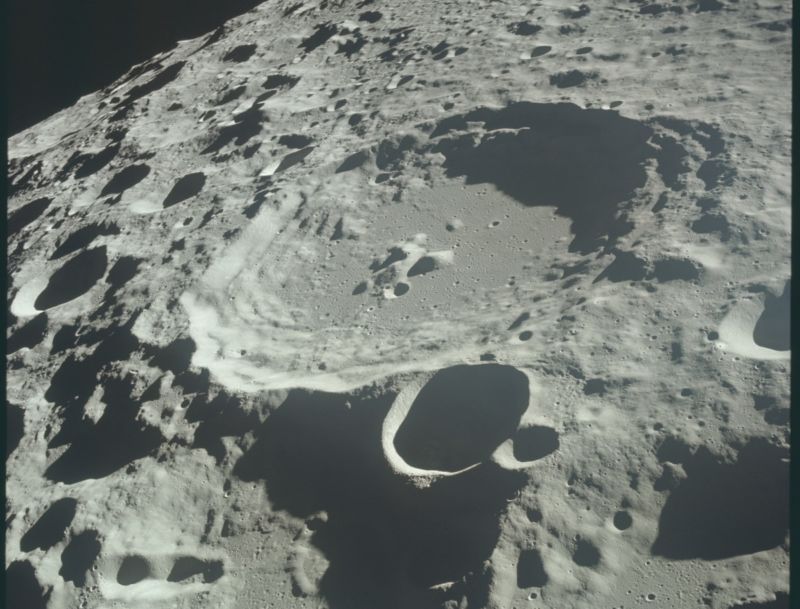
In the nearly five months that have passed since Vice President Mike Pence directed NASA to return humans to the Moon by 2024, the space agency has made significant progress toward that goal.
During this time and under the leadership of administrator Jim Bridenstine, the agency has let contracts for both the elements of the Lunar Gateway, the small space station that will follow a distant orbit around the Moon. NASA has also begun to solicit ideas from industry about their designs for a three-stage lunar lander, upon which construction could begin sometime in 2020. The agency is also soliciting cargo deliveries to the Moon.
These are big steps, and getting a large agency like NASA moving quickly is difficult. For all of this, however, there are storm clouds on the horizon. Most obviously, there is the matter of paying for the Artemis Program to put humans on the Moon—the US House did not including funding for this effort in its preliminary fiscal year 2020 budget, and the Senate has yet to draft a budget. If there is not additional funding, NASA cannot give industry funds to go and do the work.
But there is another problem as well, which was highlighted at Tuesday's meeting of the National Space Council by Clive Neal, a lunar scientist at the University of Notre Dame. NASA stands a very real risk of turning the Artemis Program into a repeat of the Apollo Program—a flags-and-footprints sprint back to the Moon with no follow-through in the form of a lunar base or a sustained presence in deep space.
A stepping stone?
"To look forward to the Moon, we need to learn from the past," Prof. Neal said. "The Apollo program was a monumental achievement. However, Apollo showed us how not to conduct human space exploration because such a program based on international competition is not sustainable."
From the outset of his tenure, NASA administrator Jim Bridenstine has talked about building a "sustainable" lunar program and going to the Moon to stay. In his speech in March, Vice President Pence said the same. He wants NASA's next giant leap to be going to the Moon, but this time to stay.
"Now it's come the time for us to make the next 'giant leap' and return American astronauts to the Moon, establish a permanent base there, and develop the technologies to take American astronauts to Mars and beyond," Pence said.
Since that time, however, President Trump has said on multiple occasions that he is more interested in humans "planting a flag" on Mars than returning to the Moon. He has publicly questioned Bridenstine about the need to go to the Moon before Mars, and during recent speeches that mention space, he has ignored the Moon entirely.
In response to this, Bridenstine has pivoted from talking about the value of the Moon as a permanent base for human exploration. Instead, he speaks of it as a "proving ground" or "stepping stone" on the pathway to Mars.
Bridenstine and Pence sat side by side Tuesday on the dais as Prof. Neal explained that this approach devalued the Moon and threatened to undermine NASA's efforts to return humans to deep space. "The Moon has been interpreted, at least by some, as a stepping stone or a box to check on the way to Mars," Neal said.
Such a viewpoint ignores the intrinsic value of lunar resources, Neal said, in the form of water ice at the poles, as well as the lunar soil which can be broken into oxygen, titanium, silicates and more. If NASA is going to set this aside and just touch the Moon on the way to Mars, what's the point in performing a pale repeat of the Apollo program?
Checkered history
The reality is that, even with a healthy budget increase, NASA can barely afford a human landing program on the Moon in the 2020s—at least using its Space Launch System rocket and usual ways of doing business, as it appears set on doing. This is more than enough for a space agency that has not flown a human into deep space for 47 years.
Talk of Mars is historically unsupportable with current budgets or NASA's existing technology. (As just one example, NASA at best can build one SLS rocket a year, and a single human mission to Mars would require six to eight SLS rocket launches). Past efforts to go to the Moon, Mars, or both have all ended in cancellation. So by talking about an all-of-the-above Moon-to-Mars exploration plan now, NASA's administration seems to be moving from the edge of the possible into the realm of the impossible.
But that hasn't stopped the White House from a march toward Mars. At the end of Tuesday's meeting, Vice President Pence directed Bridenstine to return with timelines for human landings on the Moon, as well as for human missions to Mars. "We are setting specific timelines for the administrator in the next 60 days... for the submission of a plan for sustainable lunar surface exploration and the development of crewed missions to Mars," Pence said.
reader comments
169